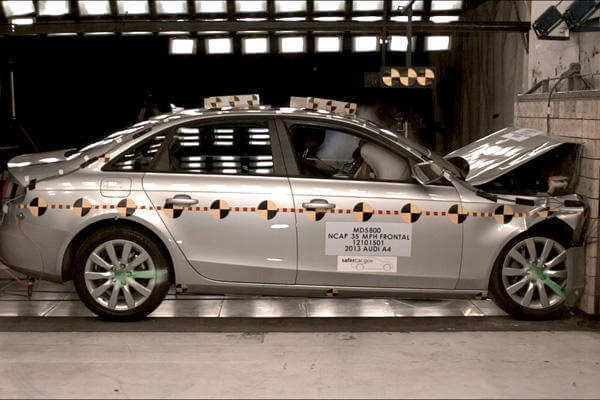Content provided courtesy of USAA.
It's a scary thought. You glance down to grab your travel mug or change the radio station just as the van traveling in front of you slams on the brakes. What if your car could brake automatically to help avoid the crash?
Fortunately, this technology, along with others that could also keep you safer, already exists.
"Advanced crash-avoidance features are becoming more common — almost expected," says USAA's Joel Camarano, assistant vice president of property and casualty underwriting , innovation and development. "Manufacturers are looking for ways to make cars safer, and we're seeing the emergence of these safety solutions in more moderately priced cars."
So beyond the basic list of car buyer's questions — what make, what model, what color — add this one: What kind of safety features and systems does the car have?
Proving Their Worth
As automakers computerize cars and expand the list of standard safety features, the options may be overwhelming. "Most of these features are designed to help prevent or avoid an accident, but they can also help reduce the severity of one by slowing the vehicle before an impact," Camarano says.
But not all features that sound helpful have data to prove that they are. "Many of the crash-avoidance features are so new that we don't know yet whether they're helping drivers avoid crashes," says David Zuby, chief research officer at the Insurance Institute for Highway Safety.
He notes two exceptions: Systems that help drivers avoid front-to-rear collisions, especially with automatic braking, and adaptive headlights, which aim in the direction a driver steers. "Our research indicates that these [two features] are definitely worth the extra cost," Zuby says, citing a 2012 report from the institute's sister organization, the Highway Loss Data Institute.
Here's a rundown of eight prevalent safety features to consider.
1. Adaptive cruise control. This uses forward-looking sensors like radar and cameras to monitor the distance to a lead vehicle. The system will automatically slow the vehicle down in traffic to maintain a safe following distance without the driver having to do anything. As traffic speeds up, the vehicle accelerates to maintain the preset speed.
2. Forward collision avoidance system. Using the same forward-looking sensors, these pre-crash warning systems alert drivers with visual or auditory cues when the vehicle is getting too close to the one in front.
3. Autonomous braking. If the driver doesn't respond to the warning, some systems are able to brake automatically to prevent a collision or lessen the impact. Systems that combine forward-collision warning and auto-brake are the most effective, Camarano says.
4. Adaptive headlights. This innovative technology, which allows drivers to see better as they round a curve, surprised researchers with how well it performed. According to Highway Loss Data Institute research, property damage liability claims fell as much as 10 percent with adaptive headlights.
5. Backup camera. Once a luxury vehicle standard, the backup camera often displayed in the rearview mirrors or in-dash display is now a popular option on midrange cars, giving drivers assurance when backing out of a parking spot or down a driveway.
6. Reverse backup sensors. For use with or without a camera, this equipment beeps if you are about to hit something while backing up.
7. Sideview assist. Sensors can detect a car in your blind spot and then alert you with a light in your side mirror or with a beep if you engage your turn signal.
8. Parking assist. Anxious about squeezing into that tight space? An increasing number of models offer a feature that detects the size of a parallel parking space, guides you into the starting position, and then allows you to completely take your hands off the wheel while the computer backs the vehicle into place.
Learning More
As technology advances each year, expect to see more options and refinements to safety features. "In the long run, as vehicles outfitted with safety features prove their effectiveness, auto insurance rates should begin to account for the protections the features may add," Camarano says.
The Insurance Institute for Highway Safety has introduced a new rating system for front-collision prevention systems — basic, advanced or superior — so that consumers can evaluate various makes and models. The new ratings can help car buyers see the differences between systems offered by various automakers, Zuby says. And this year, the institute required at least a basic rating on the front-crash prevention system as part of the criteria for its 2014 Top Safety Pick+ list.
Taking the time to research safety options as you look for a new set of wheels could save you from a fender bender — or potentially save your life. "Members may avoid the hassle of having a car in the repair shop," Camarano says. "But more importantly, they can possibly avoid serious injuries."










